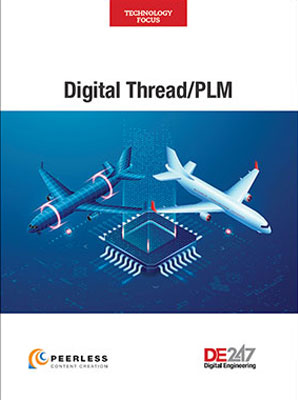Generative Design in Support of Science-based Modeling and Simulation
In today’s increasingly competitive market, it is no longer sustainable to approach design slowly and methodically. Designers are challenged with faster design cycles and more demanding design requirements.

Latest News
November 16, 2022
In our previous posts, 5 Reasons to Adopt Science-based Modeling and Simulation, and Unified Modeling and Simulation, we explored why we do science-based modeling and simulation, and how new paradigms in this field are delivering next-generation product design systems with modeling and simulation at their core. In this post, we conclude our series with generative design, which allows you to explore and validate designs through simulation, making better-informed decisions on weight reduction and optimized performance.
Think Light at the Speed of Light with 3DEXPERlENCE Generative Design
In today’s increasingly competitive market, it is no longer sustainable to approach design slowly and methodically. Designers are challenged with faster design cycles and more demanding design requirements.
Their compositions must be lighter, cheaper, more aesthetic and more streamlined than the competition’s. They need to push past conventional ways of working to think innovatively … and quickly.
Until recently, both traditional design tools and partiality impeded professionals. Now, by using software solutions such as Dassault Systèmes’ design, collaboration and development tools, designers can work differently, starting by integrating the constraints and then letting themselves be guided by the calculations that will offer them the most suitable alternatives.
Designing climate-neutral products
The push for more sustainable products has motivated many companies to adopt more modern design strategies. In the pursuit of climate-neutral products, design is key in weaving sustainability elements into a product’s design concepts and promoting sustainable behavior throughout the value chain.
Embedding eco-design principles early in the design phase is a crucial first step toward establishing how a product is made and used. 80% of manufacturing waste happens in the conception phase, so it is critical to make the right decisions and the right choices upfront. To shorten the time to market and achieve a greater competitive advantage, companies are relying on computational testing with physics-based simulation at all stages of the product lifecycle, from product requirements to design and manufacturing and in-use scenarios. The result is less real-world testing and prototyping while lowering cost and reducing risk. As a result, physical certification testing is faster and high-quality products get to market faster.
How do we deliver value?
Adopt the “light-is-right” strategy - In today’s increasingly competitive market, designers must push past conventional ways of working to think outside the box. Meeting customer demands is imperative, which means innovating one concept at a time is no longer a sustainable method.
A valuable eco-design principle is light-weighting, which reduces materials used without compromising overall quality and performance, saving material use, cost and time. By adopting a light-weighting strategy, companies can truly unleash the power of generative design.
Among all the manufacturing processes used to produce lightweight parts, additive manufacturing is the most suitable solution for the complexity of these innovative shapes. Generative design is as a generic term for using computation to assist in the design process. Conceptually, it represents the use of algorithmic methods to quickly and automatically transform requirements, constraints, uncertainties, and design space to create viable shapes.
Generative design empowers any designer to be able to define simulation specifications without having to be an expert in simulation or finite elements and calculation, helping to produce lighter, innovative and validated parts/assemblies. CATIA Generative Design Engineering (GDE) helps non-specialists automatically generate optimized conceptual parts from a functional specification at the push of a button. By varying inputs, designers can generate multiple variations to compare and analyze.
With 3DEXPERIENCE® platform, you have an integrated weight optimization platform to allow you to increase productivity by leveraging the extensive portfolio of CATIA and SIMULIA apps for the creation and management of sophisticated lightweight products. You can:
- Optimize product weight and stiffness with lightweight engineering
- Reduce time and cost by evaluating concepts faster
- Evaluate more concepts while maintaining design specifications
- Leverage real editable geometry for both conventional and additive manufacturing
- Generate and simulate optimized concept shapes easily
- Manage collaboration between design, simulation and manufacturing seamlessly.
Better products faster
Performance Driven Generative Design allows designers to explore and validate through simulation, make informed decisions on weight reduction and performance gain. Optimized shapes that could not have been imagined using conventional design methods are now at the designer’s fingertips.
Designers have a newfound freedom to take advantage of flexible processes while benefiting from the seamless collaboration between design, simulation and manufacturing. No data is lost in translation and fast design optimization and evaluation is only increased – allowing users to create better products faster.
Learn more about modeling and simulation by watching this great session: Accelerate Business Value through Unified Modeling & Simulation (3DEXPERIENCE ID required)
The 2022 3DEXPERIENCE Modeling and Simulation Conference is on October 13, 2022, for audiences in Europe and the Americas. Click here to register and view the latest agenda!
More Dassault Systemes Coverage

Subscribe to our FREE magazine, FREE email newsletters or both!
Latest News







